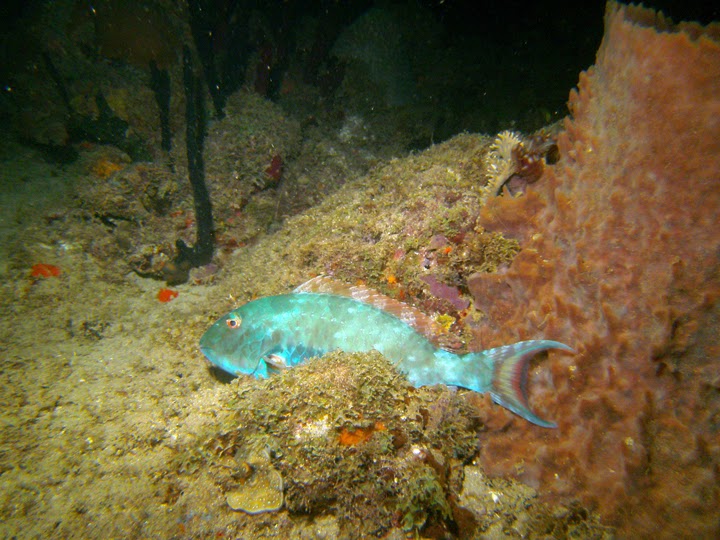Scuba diving at night is a whole different animal! There is the obvious - it's dark and your field of vision is limited to the width of the beam of your dive light, like your field of vision when driving at night is limited to the width of your headlight beams. Among other things, this narrow field of vision forces you to look closely for the smaller things.
Things look different at night when you hit them with a dive light. During the day the water absorbs light, starting with the reds and yellows. During daytime dives the red sponges in the picture above look blah, kind of greyish-brown. Because dive lights or flash units are more nearly full-spectrum and add those colors back and they pop!
There are different things to see at night. We hardly ever see basket starfish (related to the brittle starfish) during the day. If we do notice one, it looks like a grey or brown lump perched on the edge of a sponge. At night they open up like radar antennae to feed. According to the entry in Wikipedia, Basket starfish can live for up to 35 years and weight as much as 11 pounds.

Even fish that we commonly see during the day, like this parrotfish, look and act differently at night. Again, with the full-spectrum light, we get to see it's true colors. And parrotfish sleep at night. The create a protective mucus-like "shell" around themselves. We try not to disturb them because if they wake up and break their "shell," they won't sleep the rest of the night.
The first time I ever heard whales singing underwater was on a night dive. Three of us stopped swimming and for a moment stopped breathing to listen. It was incredible, truly breath-taking.
Can you tell? I really like night dives.
There are more photos from this dive on our Flickr page. Check 'em out.


No comments:
Post a Comment